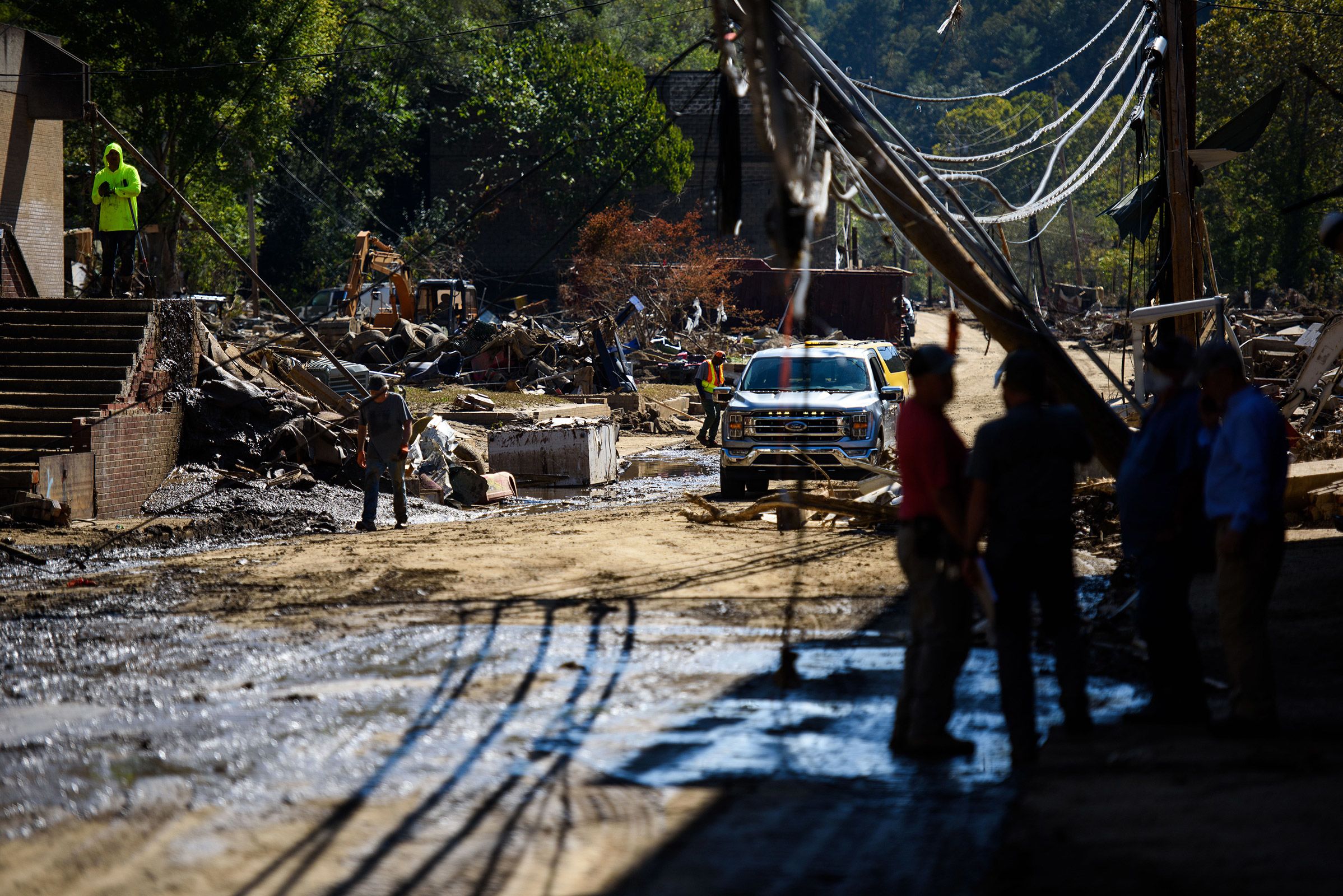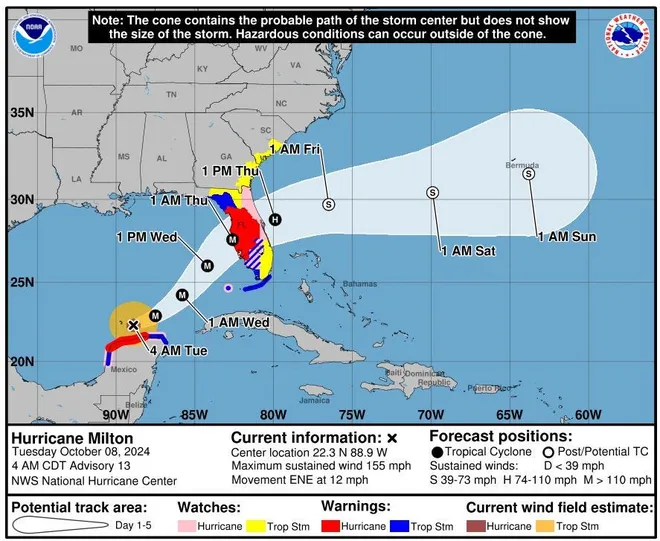Hurricane Milton regained Category 5 strength Tuesday as it barreled across the Gulf of Mexico toward the Florida Peninsula, where millions scrambled to wrap up storm preparations and evacuate vulnerable areas.
The National Hurricane Center said the Milton’s storm surge presents an “extremely life-threatening situation” for the western coast of Florida, adding that damaging winds and torrential rainfall will extend well inland and outside the forecast cone. Hurricane warning maps show Florida blanketed in red and orange alerts.

Milton had undergone stunningly rapid intensification Monday, its sustained winds reaching 180 mph. By Tuesday morning, the wind speed dropped dramatically before climbing to 160 mph Tuesday evening.
While the storm is expected to weaken before it makes landfall Wednesday night, “Milton has the potential to be one of the most destructive hurricanes on record for west-central Florida,” John Cangialosi, a specialist with the National Hurricane Center, warned in an update Tuesday. Milton’s center is predicted to make landfall somewhere along the coast between Tarpon Springs and Cape Coral, according to the hurricane center’s official forecast.
“Again, it is critical to remember that even at 24 hours out, it is still not possible to pinpoint an exact landfall location,” Richard Pasch, a senior hurricane specialist at the hurricane center, wrote in a forecast discussion Tuesday night. The center’s average margin of error at 24 hours is 48 miles.
Milton is forecast to cross the state in a northeasterly direction, exiting the east coast somewhere between Daytona Beach and Stuart on Thursday morning.
Florida Gov. Ron DeSantis told state residents in the path of Milton that “time is running out” before landfall, likely as a Category 3 storm. The National Weather Service in Tampa warned Tuesday that if Milton stays on course, it would be “the most powerful hurricane to hit Tampa Bay in over 100 years.”
More than 1 million people were under evacuation orders in at least 16 counties, and both numbers were expected to climb as Milton draws closer to a coastline still recovering from Hurricane Helene’s strike less than two weeks ago. More than 20 million of Florida’s 22 million residents are under either hurricane or tropical storm warning.
In St. Petersburg, Julie Bost fled for safety. Bost, 32, was a new mom with a 3-month-old baby when her home was flooded by Hurricane Idalia last year, causing $65,000 in damage. “I couldn’t go through another flood,” Bost told the USA TODAY NETWORK – Florida. “I told my husband I couldn’t handle that again emotionally.”
